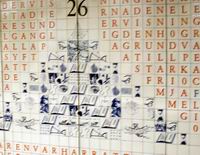June 04, 2007
No Femtotech Grey Goo?
 I recently came across the paper Non Existence of Quantum Mechanical Self Replicating Machine by Chakrabarty and Indranil which builds on Quantum mechanical Universal constructor by Patil and Braunstein.
I recently came across the paper Non Existence of Quantum Mechanical Self Replicating Machine by Chakrabarty and Indranil which builds on Quantum mechanical Universal constructor by Patil and Braunstein.
The paper shows that it is not possible to make a self-replicating quantum mechanical device because of the linearity of quantum mechanics, the no cloning theorems and the conservation of entanglement. The unitariness of quantum mechanics is not very favorable towards replication: a real replicator needs to convert arbitrary states into states corresponding to a copy, but quantum mechanics is information preserving. We need decoherence to replicate. Presumably one could construct an approximative replicator that does not achieve perfect self-replication but only "good enough" replication (the Patil paper shows that one can make a replicator that produces a finite number of generations, and mentions the possibility of indeterministic replicators).
The Patil paper proves that "with a finite-dimensional program state and a finite nutrient resource there is no deterministic universal constructor for arbitrary quantum states". This seems to imply an interesting limit on femtotech: just because a state is possible doesn't mean it can be constructed.
This might put an annoying limit on our future technological capabilities and confuse the discussion about the physics of life (both papers seemed to think that something weird must go on to allow biological replication, which is looking at the wrong problem: biological reproduction requires an arrow of time in the first place, a much trickier problem to derive from quantum mechanics). But it also rules out femtotech grey goo. Imagine what could be done if quantum universal assemblers were possible: devices that convert their surroundings into more devices without any entropic losses - a smooth recrystallisation of matter (and energy?) into femtotech. We should probably be happy that we only have to consider thermodynamically constrained grey goo.
It would be interesting to see if these results could be extended to constrain hypothetical femotech further. How much decoherence is needed to do something useful? In a probabilistic assembler, how large can the success probability be made?
Posted by Anders3 at June 4, 2007 10:39 PM